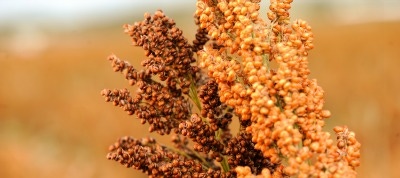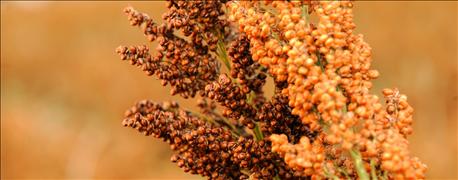January 7, 2016

2015 was a great year for the sorghum industry. Not only did we see incredible acreage gains driven by exploding demand from China, we saw ethanol plants re-enter the demand picture and a flurry of positive press surrounding sorghum as an ingredient in human and companion animal food markets. To be sure, 2015 was one for the record books.

I grew up on the farm, so the aspect of the 2015 crop that excited me the most was the yield environment. Last year producers in the Sorghum Belt saw some of the best conditions ever. Those of us that have made our careers working for the sorghum industry have waited a long time to evaluate our genetic capabilities in such a year. The crop didn’t disappoint.
At approximately 77 bushels, the 2015 crop broke the previous national yield record of 73.2, which was set in 2007 under extremely good early conditions. But that crop’s condition backslid late—this one finished.
The national average yield is only half the story though. The 2015 National Sorghum Producers Yield Contest saw entries far exceed past years, and the average yield in the winner’s circle continued inching upwards. The year proved what many of us have known for years—with the right conditions and the right incentives, sorghum has a lot more yield potential than averages will lead you to believe. You can go to SorghumGrowers.com for more information on the winners and the new incentives for testing sorghum’s genetic limits.
Some of the most impressive yields weren’t even entered in the contest. I know one producer that had a late-planted double crop field yield nearly 200 bushels, and there were numerous instances of yield monitors spiking well into record territory. It’s amazing to see sorghum breeders’ hard work pay off now that the worst of the drought is behind us.
So, what’s next? If you pushed sorghum’s genetic limits in 2015, you might be thinking about trying again in 2016. You might even be thinking about devoting a larger percentage of your acres to sorghum. There are quite a few things to keep in mind if this describes you. I’ve written a lot lately about costs, and I don’t have to remind anyone of the lower seed costs—and depending on your situation, possibly lower herbicide, fertilizer, irrigation or harvest costs—in sorghum. But what about overhead costs?
Knowing your costs is extremely important for the financial health of your operation. Not only will it help you make more informed financial management decisions, cost-tracking will allow you to be a better marketer, as well.
Variable costs are often pretty easy to track, and watching them can even be fun. Maybe you increased your sorghum acres. Maybe you went with a new flex-ear hybrid and lowered your corn population. Either way, logging that lower seed bill probably felt great. But overhead can be less straightforward. Incorrectly allocating these costs can lead to inaccurate estimates of per-acre production costs, which can impede a number of decision-making processes.
A few large producers I work with allocate overhead by using the percentage derived by dividing each crop’s variable expenses by total expenses. For example, a producer with $400,000 in total variable costs, $250,000 in variable costs on sorghum and $150,000 in variable costs on wheat would allocate 62.5 percent of total overhead to sorghum and 37.5 percent of total overhead to wheat.
It’s actually a pretty simple exercise, but it will help you become a better cost-tracker, financial manager and marketer. Good thing too—with these high sorghum yields, astute marketing is going to pay big dividends.
Cogburn writes from Abernathy, Texas. His twitter handle is @nspchris.
You May Also Like




